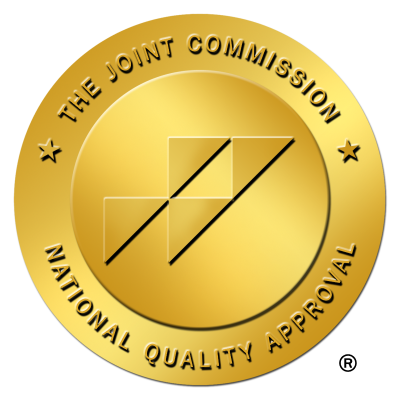Addiction Treatment in Oklahoma: Options

Key Takeaways
- Crisis Support is Available 24/7: The 988 Mental Health Lifeline provides immediate access to trained counselors, mobile crisis teams, and emergency detox services for those facing substance use emergencies.
- Medicaid Expansion Changed Everything: Since July 2021, adults earning up to 138% of the federal poverty level now qualify for comprehensive Oklahoma addiction treatment coverage, removing historic barriers for over 200,000 people.
- Rural Barriers Have Real Solutions: Telehealth counseling, mobile crisis teams, transportation assistance, and peer support networks help bridge the gap for those in underserved areas.
- Your Privacy and Job Are Protected: Federal laws like HIPAA, FMLA, and ADA safeguard your treatment confidentiality and employment security when seeking recovery services.
- Evidence-Based Care Requires Verification: Look for accreditation from The Joint Commission or CARF International, licensed professionals, and transparent outcome data when choosing treatment providers.
Understanding the Landscape of Oklahoma Addiction Care
When you look at Oklahoma addiction treatment, it's normal to feel overwhelmed—this is one of the toughest landscapes in the country for substance use and mental health needs. Yet, real change is happening: Medicaid expansion has opened doors for more than 200,000 additional adults since July 2021, making care possible for many who had no options before.1, 3
As you weigh local addiction recovery choices or behavioral health support, know you're not alone—persistent rural barriers exist, but crisis intervention and new policies are giving you more routes to seek effective help.
Analyzing Substance Use Trends and Risk Factors
Before you decide on an Oklahoma addiction treatment program, it's vital to analyze how specific substance use trends affect your region and needs. Methamphetamine use in Oklahoma remains well above national averages, intensifying the demand for stimulant-specific recovery programs.5
The mix of opioid and methamphetamine use makes dual-substance treatment essential—a challenge especially for rural areas, where 28 counties are classified as high-need but low-capacity for care.1 Carefully considering these patterns will help you determine whether local or urban options will best support your recovery journey.
Assessing the Prevalence of Methamphetamine and Opioid Use
If you're weighing Oklahoma addiction treatment options, it's critical to understand just how prominently methamphetamine and opioid misuse shape care requirements here. Methamphetamine admissions have surpassed national rates, pushing providers to design recovery programs with extended stabilization and focused support.5
The rise in fentanyl-related opioid cases adds serious risk and complexity.6 Your best path: choose a facility offering both stimulant- and opioid-specific therapies, especially if your substance history involves more than one category.
Recognizing Dual Diagnosis and Co-Occurring Disorders
If you've ever wondered why recovery sometimes feels out of reach, you're not alone—many in Oklahoma face both substance use challenges and mental health conditions simultaneously. This combination, known as dual diagnosis, is extremely common and demands an integrated treatment approach.1
Effective Oklahoma addiction treatment for co-occurring disorders targets both substance use and underlying issues such as depression, anxiety, or trauma. Choose programs with psychiatric professionals to ensure your care addresses every piece of your wellbeing. Remember, addressing both together gives you the best chance at real progress.
Identifying Regional Disparities and Rural Barriers
If you live outside major cities like Oklahoma City or Tulsa, you may already know how location restricts Oklahoma addiction treatment access. In 28 rural counties, resources for substance use recovery are stretched dangerously thin—often forcing long drives or daily travel for basic care.1
We've seen dedicated individuals face added financial strain, minimal specialized services, and limited peer support. Don't get discouraged; rural barriers are real, but solutions exist, like telehealth counseling and mobile crisis teams, to help bridge these gaps.
Navigating Oklahoma's Policy and Regulatory Environment
Decoding Oklahoma addiction treatment policy doesn't have to be confusing—even if it feels like a maze at first. The state's Medicaid expansion has shattered long-standing barriers for adults who previously fell through the cracks, now enabling coverage for essential recovery services.3
Federal insurance parity rules safeguard your right to substance use disorder care equal to any other health benefit.8 Understanding these changes gives you real power: from knowing which Oklahoma addiction treatment centers accept your plan, to estimating out-of-pocket costs and protecting your privacy. With this knowledge, you can confidently pursue care and advocate for yourself every step of the way.
Medicaid Expansion: What's Changed for Access
Since July 2021, Medicaid expansion in Oklahoma has transformed who can receive Oklahoma addiction treatment. Now, adults earning up to 138% of the federal poverty level are eligible for coverage—helping over 200,000 people access much-needed recovery resources.3
Many clients who once fell into a coverage gap—earning too much for traditional Medicaid but unable to afford private insurance—can finally secure residential rehab, medication-assisted treatment, and outpatient services. We see firsthand that this shift removes heartbreaking financial obstacles for working adults and families, opening doors to the evidence-based substance use disorder care that so many urgently need.
Insurance Parity Mandates and Coverage Rights
When pursuing Oklahoma addiction treatment, you're protected by federal parity laws—meaning your insurance must cover substance use and mental health services on par with medical care.8 Insurers cannot hike up deductibles or copays for behavioral health care, nor can they limit rehab or therapy visits more strictly than physical health services.
These mandates apply to individual and group plans alike, ensuring evidence-based addiction therapy, counseling, and medication support are accessible. Knowing your rights enables you to challenge denials or unjust claim restrictions. If you encounter pushback, don't hesitate to appeal—standing up for your coverage is an important step in your recovery journey.
Ensuring Ethics and Privacy: HIPAA in Treatment Settings
Protecting your privacy during Oklahoma addiction treatment is not just a promise—it's a legal standard. Under HIPAA and special federal regulations, your substance use treatment records are shielded even more tightly than most medical information, requiring your signed consent for any disclosure.8
Authentic addiction recovery programs in Oklahoma implement encrypted communication, only grant staff access as truly needed, and spell out every circumstance where information might be shared. If you worry about stigma or job impacts, you're absolutely justified; these safeguards allow you to seek recovery with confidence, knowing your health details and treatment milestones remain yours alone.
Self-Assessment: Are You Ready for Recovery?
Taking an honest look at your readiness for Oklahoma addiction treatment can feel daunting, but it's a huge step toward lasting change. Everyone's motivation fluctuates, and facing doubts is part of the process—trust that you're not the only one questioning if you're prepared to pursue recovery.
True readiness goes beyond wanting to quit; it means you're willing to change routines, rebuild trust, and commit to support. Assessing your openness and real-life resources helps match you with the Oklahoma recovery services most likely to fuel sustainable progress.1 Every bit of self-awareness you muster right now lays the groundwork for success.
Diagnostic Questions for Individuals and Families
Everyone's journey with Oklahoma addiction treatment looks different, but these questions help spotlight patterns that often signal a need for professional support:
- Have you noticed your thoughts turning to substances multiple times a day?
- Is your health, work, or family life suffering—perhaps more than you're comfortable admitting?
- Are you hiding your use, making excuses, or finding it difficult to imagine life without substances?
Families: watch for changes in mood, openness to help, and willingness to try Oklahoma recovery programs; these observations provide vital clues to true readiness for change.1
Recognizing Crisis Points and Immediate Needs
Spotting a crisis is never easy, especially when emotions run high. If you're thinking about self-harm, feeling powerless to stop using substances despite health problems, or running into legal trouble because of your use, you need immediate help, not judgment.
Intense withdrawal, frequent blackouts, medical emergencies, or isolating from loved ones are all urgent red flags. Oklahoma addiction treatment providers and the 988 Mental Health Lifeline connect you to fast crisis support and expert intervention when you need it most.7
Assessing Support Systems and Community Resources
A strong support network makes a huge difference in your Oklahoma addiction treatment outcomes. Take an honest look at who truly motivates your healthy choices—sometimes even well-meaning loved ones unintentionally enable setbacks.
Urban communities often offer richer peer groups, faith-based programs, and vocational aid, while rural residents may face travel for group therapy or family support. When natural supports are limited, connecting with Oklahoma recovery resources like telehealth counseling and local peer-led initiatives can bridge gaps and reduce your sense of isolation.1
Decision Framework: Selecting the Right Treatment Path
Choosing your Oklahoma addiction treatment path isn't just a checklist—it's a decision that shapes your future. Here's the reality: you'll need to weigh factors like how severe your substance use is, whether you're facing co-occurring mental health needs, what support you have, and your daily responsibilities.1
Trust your process. This framework will help you compare treatment types, assess program quality, and get honest about what fits your life—no one path works for everyone, but everyone deserves the right tools to make a strong start.
Comparing Levels of Addiction Care in Oklahoma
Matching your needs to the right level of Oklahoma addiction treatment can feel intimidating—especially with so many choices available. The reality is that care here spans a continuum: medical detox with 24/7 supervision, residential rehab for immersive stability, to outpatient support designed for people balancing work or family.
Severity of withdrawal, past treatment experiences, and your home environment all shape your best fit. Every step forward matters—these levels are built to meet you wherever you are right now.1
Medical Detox, Inpatient Rehab, and Outpatient Programs
Starting Oklahoma addiction treatment often means facing tough questions about medical detox, inpatient rehab, and outpatient programs. If substance use has created physical dependence, medically supervised detox delivers around-the-clock care for 3–10 days, managing your safety during withdrawal—especially with opioids or methamphetamine.6
Inpatient rehab then offers daily structure, therapy, and recovery community, typically for 30–90 days. Outpatient programs let you keep job or family routines but require strong motivation and local support. Choose medical detox if withdrawal is severe or you have underlying medical risks.
Medication-Assisted Treatment and Dual Diagnosis Care
If you're considering Oklahoma addiction treatment, medication-assisted treatment (MAT) and integrated dual diagnosis care are proven lifelines. MAT uses FDA-approved medications—like buprenorphine, methadone, or naltrexone—to lower cravings and stabilize you during early recovery, especially for opioid dependence.6
For individuals managing both substance use and mental health challenges, dual diagnosis programs deliver coordinated psychiatric and addiction counseling. This approach works best when previous attempts have not worked, you face intense withdrawal, or you struggle with depression, anxiety, or trauma as part of your recovery reality.1
Family Programming, Aftercare, and Sober Living Options
If you're stepping into Oklahoma addiction treatment, building a support system with your family can make all the difference. Family-centered programs go far beyond the surface—they teach loved ones to communicate openly, set boundaries, and become true partners in your recovery.1
Aftercare and sober living homes give you structure after formal treatment, offering ongoing counseling, peer engagement, and a stable environment—crucial building blocks for lasting change. Consider this route if you crave accountability and connection in your next chapter.
Decision Criteria: What Matters Most in Treatment Selection
When it's time to select an Oklahoma addiction treatment program, you deserve more than promises—you need proven quality and accountability. Effective providers back up claims with transparent results, proper state licensing, and genuine use of evidence-based care.1
Prioritize centers accredited by respected organizations and staffed with licensed professionals; these details matter. Pay close attention to insurance acceptance and ask detailed questions, especially since Medicaid expansion has changed access in Oklahoma.3 This approach protects your well-being, your privacy, and sets you on a recovery path that actually fits your life.
Clinical Accreditation, Evidence-Based Practices, and Outcomes
When you're evaluating Oklahoma addiction treatment centers, don't settle for surface-level guarantees—your recovery truly depends on certified quality. Always confirm that a facility holds accreditation from organizations like The Joint Commission or CARF International, as this demands strict safety and clinical standards for every patient.1
Effective programs should be transparent, sharing real outcome data and offering therapies rooted in research, such as cognitive-behavioral interventions, medication-assisted treatment, and trauma therapy. Insist on a team that includes licensed addiction professionals and dual diagnosis expertise—these credentials protect both your health and your hope for lasting recovery.
Location, Amenities, and Privacy Considerations
Where you receive Oklahoma addiction treatment affects both your healing and the logistics of daily life. Urban centers often provide extensive behavioral health services and peer support, while rural programs offer quieter environments and may feel safer for those seeking distance from old triggers.1
If maintaining job or family ties is essential, look for options closer to home—but don't discount the value of a new setting if privacy concerns or difficult relationships hold you back. Especially for professionals and those in tight-knit communities, facilities with private rooms, flexible scheduling, and secure communication will protect your confidentiality and comfort along your recovery journey.
Cost, Insurance, and Financial Support Factors
Facing the financial side of Oklahoma addiction treatment can feel intimidating—but you have real options. Medicaid expansion now offers coverage for adults up to 138% of the poverty level, breaking down historic barriers to substance use disorder care.3
Private insurance must treat mental health and addiction services equally, so your benefits can't be limited or unfairly priced.8 Many local treatment centers support you by offering sliding-scale payment plans and financial aid, ensuring that recovery services remain within reach, regardless of your income.
Ethical Considerations and Quality Assurance in Care
Ethical care is non-negotiable—your well-being depends on transparent, accountable Oklahoma addiction treatment. The best substance use disorder centers publish real outcome data, use clear protocols, and undergo regular third-party audits to verify safety and staff competency.1
Insist on facilities with evidence-based methods, informed consent, and honest discussions of risks and options. Remember: accredited programs demonstrate a commitment to recovery—not profit—so you're investing in authentic healing and long-term results instead of uncertainty.
Understanding Patient Rights and Informed Consent
Knowing your rights empowers you to advocate for your health and safety at every stage of Oklahoma addiction treatment. Informed consent isn't just a formality—it's your shield. Demand that providers clearly explain every aspect: therapy options, duration, side effects, and alternative approaches, all in language you can truly grasp.8
You always have the right to decline treatments, request a second opinion, or exit a program without penalty. Quality centers respect your autonomy, share results and staff qualifications, and never rush you into decisions. Every step forward counts when you take charge of your Oklahoma addiction treatment experience.
Data Accuracy, Outcome Measurement, and Transparency
For Oklahoma addiction treatment to earn your trust, you deserve reliable proof that programs work. The most effective recovery centers openly publish outcome data, such as completion rates, employment status after discharge, and sustained sobriety markers measured at six- and twelve-month intervals.1
True transparency protects you from empty promises. Choose facilities that share both their successes and setbacks, commit to independent data verification, and welcome deep questions about their clinical methods, measurement tools, and staff qualifications. This level of honest reporting helps you choose evidence-based care and supports lasting recovery progress.
HIPAA Compliance and Confidentiality in Oklahoma Centers
Guarding your privacy isn't just a promise—it's the law in Oklahoma addiction treatment. Facilities must follow HIPAA and 42 CFR Part 2, which strictly regulate who can access your treatment records. No one—be it an employer, family member, or healthcare provider—can get information without your signed consent.8
Top treatment centers use secure encryption, strict staff permissions, and audit every access to your records. Most reassuringly, staff won't confirm your presence unless you allow it. These privacy safeguards let you seek help for substance use disorder without risking your career, insurance, or reputation.
You’re not alone in this.
When mental health challenges and addiction intersect, it can feel isolating. At Arista, we offer compassionate, evidence-based, and trauma-informed care to help you heal, grow, and move forward.

Implementation Pathways: Finding the Best Fit for Your Needs
Turning your Oklahoma addiction treatment decision into lasting recovery calls for practical, step-by-step implementation—this is where real change begins. You might feel daunted as you coordinate insurance approvals, align family support, and tackle location or transportation barriers, but you are capable of navigating these next actions.1
Expect some setbacks and emotional ups and downs; each step, from crisis response to ongoing care access, is an important piece in building your future. These pathways help you connect the right services—medical stabilization, flexible programs for professionals, or rural telehealth—keeping your recovery moving forward.
Pathways for Individuals in Crisis and Their Families
Crisis moments in Oklahoma addiction treatment can feel overwhelming, but immediate, coordinated action absolutely saves lives. If you or a loved one is facing life-threatening substance use, you need fast professional assessment—medical stabilization can't wait.7
Oklahoma's crisis pathway system brings together 24/7 hotlines, mobile crisis teams, and emergency detox to move you from danger into recovery-focused care. Family members often feel lost in the process but are truly essential—your support and advocacy can be the difference between chaos and hope. You're not expected to do this alone; these pathways ensure you get the urgent, appropriate level of care needed to set real recovery in motion.
Utilizing the 988 Lifeline and Crisis Programs
When a substance use or mental health emergency strikes, the 988 Mental Health Lifeline gives you immediate access to trained crisis counselors in Oklahoma—just dial those three digits, any time, day or night.7
This single call connects you with specialists who understand the unique pressures of Oklahoma addiction treatment, providing real-time risk assessment, personalized safety planning, and compassion without judgment. If phone support isn't enough, the system coordinates face-to-face help through mobile crisis teams who come to you—bridging the gap from crisis to an effective, person-centered recovery plan.
Coordinating Immediate Medical Detox and Stabilization
If you're facing a substance use crisis, immediate coordination for medical detox is absolutely vital. In Oklahoma addiction treatment, hospitals and emergency rooms will assess your withdrawal risks and connect you with detox centers providing 24-hour monitoring—this level of support is essential for methamphetamine or opioid complications.6
Stabilization means more than just getting through withdrawal; it addresses existing health issues and any urgent psychiatric symptoms. Expert teams will guide you and handle insurance pre-authorizations, ensuring you transition safely from emergency stabilization directly into structured recovery programming without losing momentum.
Engaging Families in Supportive Programming
When a crisis hits, your involvement as a family member often becomes the tipping point for effective Oklahoma addiction treatment. We've witnessed families hesitating—unsure if their next move will help or harm—but you are never expected to navigate this alone.
Specialized family crisis education in Oklahoma equips you with practical strategies to spot warning signs, set healthy boundaries, and communicate with both your loved one and professionals during volatile moments. These resources guide you through choices like when to contact emergency responders or participate in intervention, ensuring your support drives real safety and hope for recovery.1
Flexible Recovery Solutions for Working Professionals
Balancing your career and your recovery is not only possible—it's a path that thousands of Oklahomans walk every year. If demanding job schedules, workplace privacy, or the fear of professional stigma have held you back from seeking Oklahoma addiction treatment, you're hardly alone.
Programs tailored for busy professionals now offer intensive outpatient options, secure telehealth counseling, and small-group recovery sessions—all designed to respect your time, ambition, and right to privacy.1 These solutions empower you to keep earning, meet your responsibilities, and build healthy coping skills for future success.
Exploring Intensive Outpatient and Partial Hospitalization
Intensive outpatient programs (IOP) and partial hospitalization are practical options that let you keep earning while prioritizing recovery. IOP in Oklahoma addiction treatment typically requires three to four evening sessions per week, each lasting 2–3 hours, providing structured group support, individual therapy, and medication management.1
Partial hospitalization takes a step up, offering daytime therapy blocks and medical oversight—perfect for professionals needing a higher level of care while maintaining life commitments. This approach works best when you have a stable home and job support; opt for partial hospitalization when stressors or symptom severity require more hands-on guidance. Every adaptation supports your forward momentum.
Ensuring Privacy and Minimizing Stigma in Care
You may worry that seeking Oklahoma addiction treatment will put your job or reputation at risk—but protecting your privacy is not only possible, it's guaranteed by law. Under HIPAA, your treatment details stay confidential unless you personally permit release; employers have no right to know, and federal law shields you from workplace discrimination for pursuing recovery.8
Many Oklahoma centers offer discreet scheduling, separate entryways, and even telehealth therapy, letting you get help privately without colleagues or supervisors ever being aware. Every barrier you overcome matters—these legal and practical safeguards empower you to reclaim your well-being and career security while tackling substance use disorder.
Incorporating Holistic and Experiential Therapies
Adding holistic and experiential therapies to your Oklahoma addiction treatment plan can unlock new pathways to healing when standard counseling isn't enough. Stress-heavy roles, fast-paced careers, and years of emotional buildup often leave you feeling disconnected—not just from others, but from yourself.
Local centers now offer art therapy, equine sessions, mindfulness, and adventure-based support, which nurture self-awareness and relieve psychological strain.1 This method works when you've tried traditional approaches and need a more hands-on, whole-person recovery experience.
Transition Planning and Long-Term Recovery Support
Transition planning is the linchpin that connects Oklahoma addiction treatment with real-world independence. The weeks after structured care bring new challenges—housing, work, and managing triggers—all while the risk of relapse peaks.1
You're not alone if this feels intimidating. Building your individualized support system—step-down care, aftercare, and community resources—gives you safety nets and the practical skills to sustain recovery long after treatment officially ends. Every honest step here protects your progress and increases the odds of lifelong healing.
Sober Living Homes and Step-Down Care
Sober living homes act as a crucial bridge in Oklahoma addiction treatment, easing your move from intensive rehab to greater independence. These environments require ongoing sobriety, have curfews, and rely on house rules, all of which provide structure as you strengthen your recovery skills during this high-risk time.1
Step-down care lets you gradually shift from residential or intensive programs to outpatient support, reducing structure at a pace that fosters real resilience. If you're worried about relapse or lacking stable support at home, this gradual pathway sets you up for sustained progress.
Aftercare Planning and Community Resource Integration
Aftercare isn't just an add-on—it's the practical framework ensuring your Oklahoma addiction treatment delivers real results after formal rehab wraps up. Your aftercare plan should actively connect you to licensed counselors for ongoing therapy, local recovery organizations for accountability, and peer support groups that reinforce healthy routines.
Many in Oklahoma rebuild stability through faith-based initiatives, job placement resources, and recovery community events—especially during housing or employment transitions.1 Build an emergency contact list and layer your support network; this preparation creates real protection when triggers or setbacks threaten your hard-won progress.
Measuring Relapse Risk and Maintaining Progress
Tracking your risk of relapse during Oklahoma addiction treatment is a critical pillar for long-term success. Strong programs rely on frequent progress checks—think weekly or monthly—with tools that objectively monitor sleep, stress, support network engagement, and coping capacity.1
Watch for changes like disrupted rest, skipped meetings, or increased cravings after major life events. Celebrate your mini milestones, and use digital recovery apps or peer check-ins to spot setbacks before they spiral, keeping you motivated and resilient throughout your recovery journey.
Frequently Asked Questions
Frequently asked questions often spotlight critical barriers people face during Oklahoma addiction treatment. If sorting through insurance, access issues, or privacy worries feels overwhelming, you're not alone—readers share these same concerns every week. In this section, I'll walk you through answers grounded in actual Oklahoma resources, Medicaid regulations, and real evidence-backed care strategies. Gaining clarity on these topics is a sign of real progress—one more positive step forward as you shape your recovery plan with confidence and solid, actionable information. Every answer here is designed to move you closer to real solutions.
How quickly can someone access addiction treatment in Oklahoma if they are in crisis?
In a true crisis, Oklahoma addiction treatment systems are designed to move fast—help is often just a phone call away. The 988 Mental Health Lifeline offers 24/7 access to crisis counselors who can assess risk and connect you to medical or detox services immediately.7
Mobile crisis teams typically arrive within 2–4 hours to provide in-person evaluation and safe planning. If your situation is life-threatening, emergency departments prioritize your admission, even bypassing waitlists to get you stabilized and started on the right care path the same day.7 You are never expected to face this alone.
Are there treatment programs that specifically address methamphetamine or fentanyl use?
Yes—Oklahoma addiction treatment centers absolutely recognize that methamphetamine and fentanyl require targeted, evidence-based interventions. Methamphetamine recovery often means longer residential care and extensive cognitive-behavioral therapy, focusing on the persistent cravings and disrupted sleep unique to stimulant withdrawal.5
For fentanyl and other potent opioids, programs prioritize medication-assisted treatment (e.g., buprenorphine, methadone) alongside counseling, given the high relapse and overdose risk.6 Many facilities offer integrated support for those facing both substances, acknowledging the need for specialized, dual-focused care. You are never expected to fit into a one-size-fits-all plan—expert providers adapt protocols to your specific situation.
Can families participate in the treatment and recovery process with their loved ones?
You are not alone if you're hoping family can play a real part in Oklahoma addiction treatment—authentic recovery often starts with strong support at home. Nearly every high-quality treatment center in Oklahoma welcomes families into the process by offering structured sessions, open communication training, and weekly education that turns loved ones into allies, not bystanders.1
Family involvement creates lasting impact: you'll learn relapse warning signs together, build healthier boundaries, and support—not enable—real progress. These programs make your family an active part of your recovery journey, setting everyone up for lasting change.
How much should I budget for addiction treatment in Oklahoma, with or without insurance?
Facing the costs of Oklahoma addiction treatment can feel overwhelming, but you have more options than you might think. Your actual budget will depend on your level of care—outpatient, residential, or medical detox—and your insurance status. With Medicaid expansion, many adults now qualify for broad substance use coverage, easing the financial burden for thousands.3
If you don't have insurance, ask about sliding-scale payment plans, which can reduce your expenses significantly based on your income. Planning ahead and exploring local assistance programs connect you to life-changing recovery services within reach.
Is transportation or housing assistance available for people entering treatment?
Absolutely—real solutions exist to help you overcome transportation and housing obstacles while seeking Oklahoma addiction treatment. Many county health departments distribute gas vouchers or organize medical rides, particularly for those facing long drives from rural areas.3
During high-need periods, organizations such as recovery nonprofits, churches, and United Way step up with grants or emergency support for deposits and short-term lodging. Sober living homes bridge intensive treatment with everyday life, offering peer accountability and safe structure.1 Many Oklahoma rehab centers partner with housing authorities or local programs to ensure stability, because your recovery deserves every available layer of practical support.
What resources exist for those at high risk of overdose or in immediate danger?
When you or someone you care about is facing immediate overdose risk, Oklahoma addiction treatment offers proven, fast-acting support. Dialing the 988 Mental Health Lifeline puts you in touch with trained counselors who are ready 24/7 to mobilize emergency help, safety planning, or direct you to detox resources right away.7
Local hospitals maintain naloxone (Narcan) for reversal of opioid overdoses, and many community groups provide free naloxone kits and training. Mobile crisis teams reach most areas in hours, bridging the gap between phone support and face-to-face medical care.7 Increasingly, law enforcement in Oklahoma carries naloxone and receives up-to-date overdose response training, ensuring first responders focus on your survival and immediate entry into recovery services rather than legal consequences. Remember—no matter how tough things seem, immediate resources and skilled professionals are always within reach.
How do legal requirements or employer responsibilities interact with addiction treatment?
Facing Oklahoma addiction treatment, you have real legal protections designed to remove fear from your recovery decisions. Federal laws—including the Family and Medical Leave Act (FMLA) and Americans with Disabilities Act (ADA)—protect your job security and ban discrimination based on substance use disorder or treatment participation.8
Employers with 50 or more staff generally must grant unpaid leave for medical or rehab needs and keep your health insurance active during this period. Employee Assistance Programs (EAPs) allow you to seek confidential support and referrals—your privacy matters and is supported by robust federal requirements at every step.
What options are available for individuals in rural areas with limited treatment facilities?
You're not alone if you feel isolated by distance or local shortages when seeking Oklahoma addiction treatment in rural areas. Practically, these barriers call for creative, real-world solutions. Telehealth expands your reach, connecting you to Oklahoma recovery counseling and licensed addiction professionals, so support never hinges on travel or weather.1
Mobile crisis teams bring assessment right to your door when emergencies strike. Many health departments offer transportation help, such as gas vouchers or medical rides to urban centers.3 In my experience, small-town faith groups and peer recovery networks step up between appointments, reducing your sense of isolation and helping you persist long enough to see progress.
How does Medicaid expansion affect my eligibility and coverage for treatment?
Medicaid expansion has dramatically widened access to Oklahoma addiction treatment, particularly since July 2021. If you're an adult earning up to 138% of the federal poverty level, you now qualify for coverage that stretches across critical services—medical detoxification, outpatient and residential care, medication-assisted treatment, and dual diagnosis programs.3
I've watched individuals, who previously felt trapped by insurance gaps, finally receive the help they needed through this program. For many, it's the missing link between ongoing substance use and real recovery—no matter if your employment or income changes along the way.
What should I do if I am worried about my privacy or job security when seeking treatment?
Feeling concerned about privacy or job security is completely understandable—many people pause before starting Oklahoma addiction treatment for these exact reasons. Rest assured, federal laws like HIPAA and the Family and Medical Leave Act (FMLA) are in place to protect you. Your treatment details cannot be shared with employers or coworkers unless you provide explicit written consent, and your job is protected when you take medical leave for substance use care.8
Quality Oklahoma recovery programs use strict confidentiality protocols, offer discreet scheduling, and support telehealth services so you can access help without risking your career or reputation. Your peace of mind matters in your journey to recovery.
Does insurance cover all types of addiction treatment, and what are common out-of-pocket costs?
Insurance for Oklahoma addiction treatment must, by law, provide the same coverage for substance use disorder and mental health as any other medical condition—this includes equal copays, deductibles, and no stricter visit limits.8
Most policies include medical detox, inpatient programs, outpatient recovery, and medication-assisted treatment, but check with your provider for the fine print. Unexpected out-of-pocket charges—like for extended residential stays, specialty therapies, or private rooms—can arise even with insurance.3 Don't hesitate to ask each facility for a detailed breakdown before you begin.
How do I choose the right level of care if I have both substance use and mental health challenges?
When you're navigating both substance use and mental health challenges, choosing the right Oklahoma addiction treatment requires honest self-assessment and an integrated, dual diagnosis approach. Start with a thorough medical and psychiatric evaluation—these determine if intensive inpatient dual diagnosis care is needed for safety and stabilization, or if you can thrive in outpatient care with strong support.
Prioritize programs staffed with licensed addiction and mental health clinicians who collaborate often, using evidence-based therapies.1 If your mood or withdrawal symptoms worsen, don't wait—an elevated level of care ensures both conditions improve together.
What should I look for to determine if a treatment center is reputable and effective?
You deserve to feel confident in your Oklahoma addiction treatment choice. Start by confirming a center's accreditation—The Joint Commission or CARF International set the gold standard for safety and clinical quality.1
Ask to see outcome statistics: success rates, completion rates, and real stories of sustained recovery. Reputable providers share their protocols and employ state-licensed addiction professionals. Make sure staff welcomes your questions; genuine transparency and evidence-based therapies are signs you're in skilled, trustworthy hands.
How long does it typically take to complete addiction treatment programs in Oklahoma?
Duration for Oklahoma addiction treatment is deeply personal and shaped by your needs, goals, and recovery progress. Medical detox lasts 3–10 days based on withdrawal severity and substance type. Most residential rehab programs run 30–90 days, but some extend to 180 days for complex needs.1
Intensive outpatient care generally spans 8–12 weeks, while medication-assisted treatment may continue for several months or beyond.6 Your timeline will reflect factors like mental health, relapse history, and level of family or community support.
What are my options if I need to continue working or caring for family during treatment?
You can continue working or caring for family while pursuing Oklahoma addiction treatment—countless Oklahomans have been in your shoes, and flexible options really do exist. Intensive outpatient programs (IOP) typically run after work hours, offering group therapy, individual counseling, and medication management three to four times weekly.1
Many centers now provide telehealth sessions, so you can attend from a private room or during a break at work. Partial hospitalization programs offer daytime structure for those needing more support while still allowing part-time work or family duties. Family programming and evening group sessions also help loved ones stay involved and build stronger communication patterns throughout your recovery journey.
Conclusion: Empowered Recovery and Practical Next Steps
You've navigated the realities of Oklahoma addiction treatment—sorting through crisis intervention, dual diagnosis care, insurance hurdles, and real-world recovery support. Now, you hold the tools to make empowered choices that honor your own story and circumstances.1
No two recovery paths look the same, and that's okay—progress grows one decision and one day at a time. By leaning on proven strategies, resourceful planning, and support networks, you claim not just sobriety, but strength and renewed purpose. Every step—no matter how small—moves you forward.
References
- State Behavioral Health Conditions - Oklahoma. https://aspe.hhs.gov/sites/default/files/2021-08/StateBHCond-Oklahoma.pdf
- FY 26 - DMHSAS - BPR. https://oksenate.gov/sites/default/files/2025-01/FY%2026%20-%20DMHSAS%20-%20BPR.pdf
- Medicaid and Addiction Treatment in Oklahoma. https://recovery.com/oklahoma/medicaid/
- ODMHSAS Online Query System. http://www.odmhsas.org/eda/query.htm
- Data Snapshot: Methamphetamine in Oklahoma. https://www.healthymindspolicy.org/research/data-snapshot-methamphetamine-in-oklahoma
- Opioids in Oklahoma. https://oklahoma.gov/content/dam/ok/en/odmhsas/documents/a0001/opioids-in-oklahoma-final.pdf
- What is 988? - Oklahoma's Mental Health Lifeline. https://988oklahoma.com/what-is-988/
- Mental Health and Substance Abuse Coverage. https://www.healthcare.gov/coverage/mental-health-substance-abuse-coverage/
You’re not alone in this.
When mental health challenges and addiction intersect, it can feel isolating. At Arista, we offer compassionate, evidence-based, and trauma-informed care to help you heal, grow, and move forward.
Support that moves with you.
You’ve taken a brave first step. At Arista Recovery, we’re here to help you continue with best-in-class care designed for long-term healing and support.
.webp)






